April 21, 2023
Yorkshire’s Finest Guide to Steak
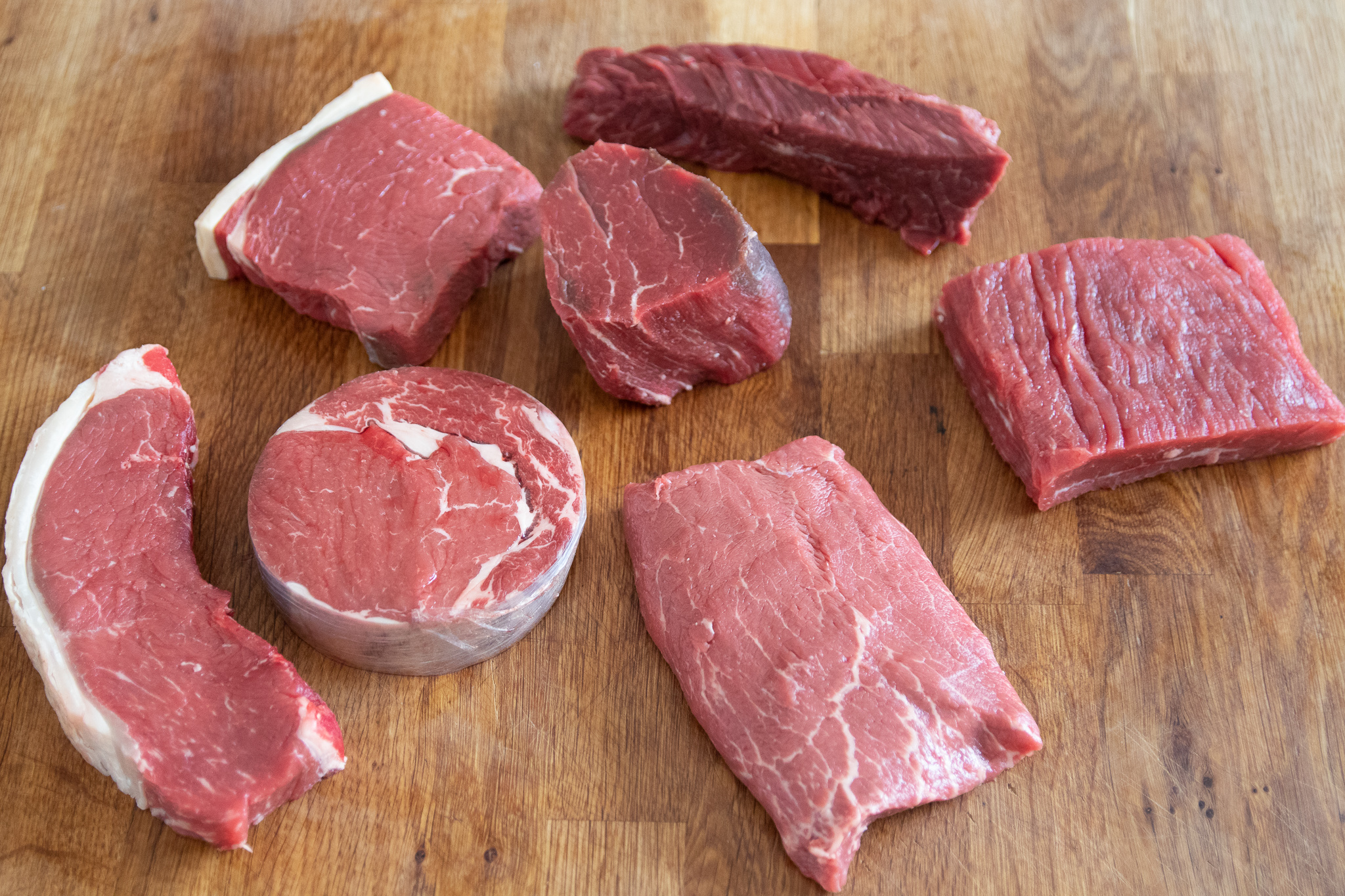
In our humble opinion, there are not many things more delicious than a perfectly cooked steak. However, in order to get it right every time, a little knowledge goes a long way. The more we know and understand about the various different cuts of steak, where they come from on the animal, their characteristics and how they should be cooked, the better.
Broadly speaking, there are traditional and non-traditional cuts.
Traditional Steak Cuts – Fillet, Sirloin, Rump and Rib Eye
These more commonly known cuts all come from the middle of the animal in the upper part of the body, starting from just behind the shoulder, leading to the top of the round in the hind quarter (see diagram below).
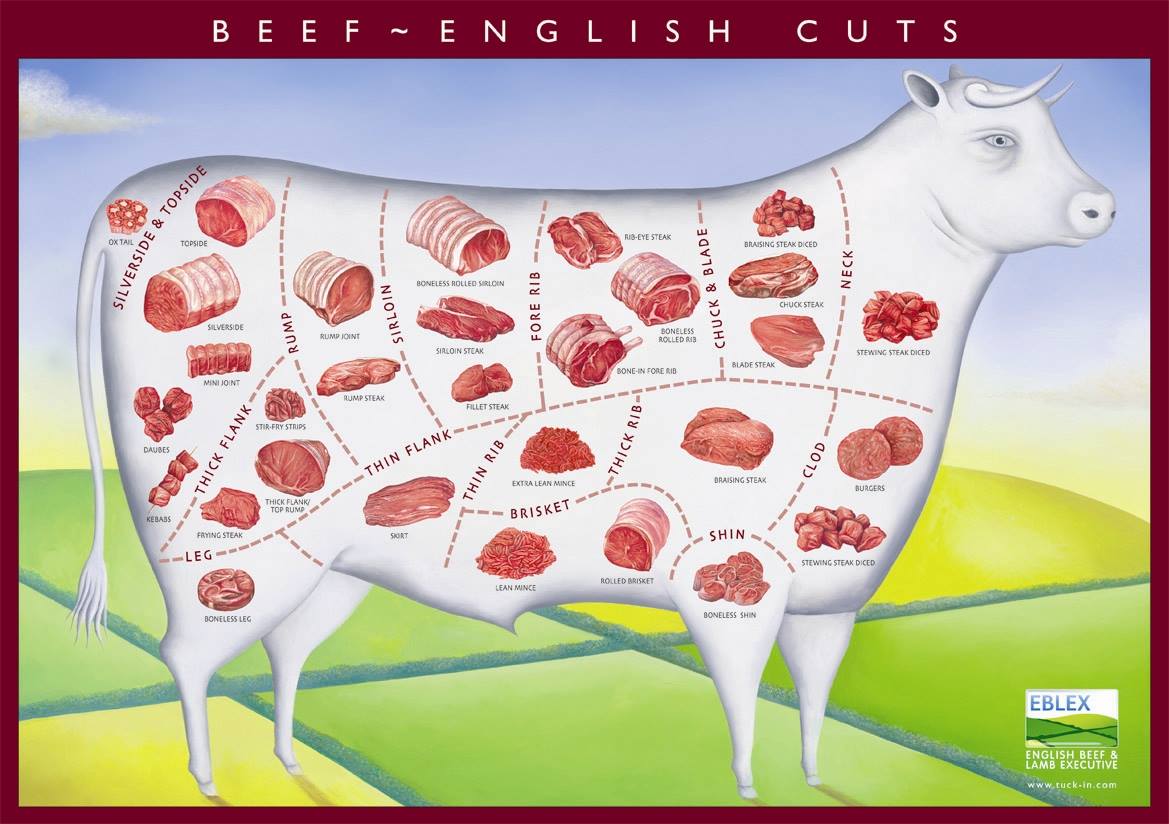
This part of the animal is where the lesser-worked muscle groups are found, ensuring that these cuts have superior tenderness, combined with a more delicate flavour.
The most tender of these is the Fillet, the inside of the sirloin from the middle back of the animal, where little to no muscle work is done. The fillet is a lean cut, with virtually no fat, that needs only a quick flash-searing. Similarly the Sirloin itself, arguably the king of steaks with its balance of tenderness and deeper flavour, cut from the middle back between the ribs and the rump, is best when grilled quickly on a hot pan or BBQ.
Moving into more working muscles and therefore up along the flavour scale, are the Rib-eye and the Rump. The Rib-eye comes from the fore rib of the animal and has a central line of fat and intramuscular marbling giving it a wonderful intense flavour. The Rump, as the name suggests, comes from the backside or top hind end of the animal and has a rich, deep flavour. Again, both steaks are best flash-fried over a high heat.
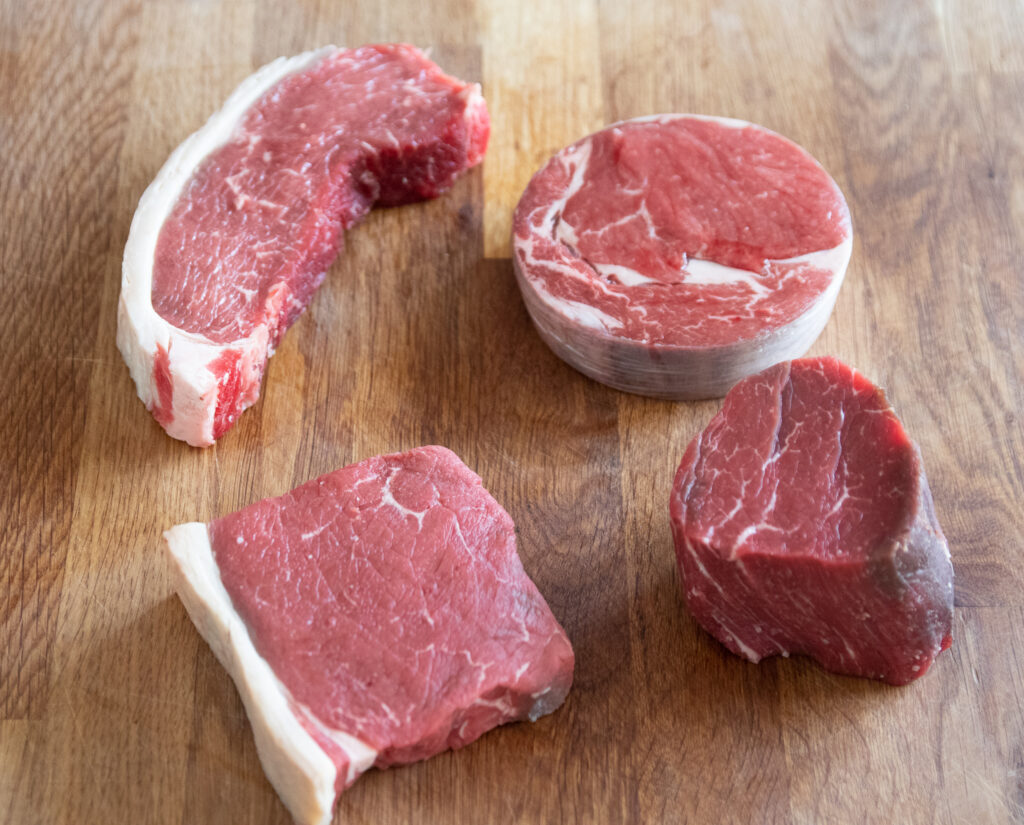
Chateaubriand, Porterhouse, T-Bone, Picanha, Cote de Boeuf and Tomahawk
These more specialist cuts are not so well-known but are derived from the same three primal steaking cuts (the fore rib, sirloin or rump of the animal). They are just prepared in a different way or portioned from different sections, using highly skilled seam butchery.
The Chateaubriand, comes from the top end of the full fillet and is therefore one of the most tender large cuts available, earning its name as the aristocrat of steaks. You may also find the delicious, tender chateaubriand inside our Beef Wellingtons, for example.
Both the Porter House and T-Bone Steak are from the lower middle section of the animal. The T-bone is cut with the sirloin on one side and fillet on the other, making it slightly more challenging to cook. We suggest putting the fillet side of the steak on an area of your BBQ with less direct heat. The Porter House is a tender bone-in sirloin steak, not to be confused with an American Porterhouse that is a T-bone style steak.
Picanha steaks, otherwise known as Rump Cap or a Culotte steak, come from the upper part of the rear of the animal, next to the sirloin. A favourite in Brazil and Argentina, and rapidly growing in popularity here. This cut boast both tenderness and outstanding flavour when cooked on the BBQ.
Cote de Boeuf and Tomahawk, both from the fore rib of beef, from the upper part of the animal’s back into the shoulder. These are larger steak cuts include the big, buttery thick rib-eye and are brilliant for sharing (depending on your appetite!) The Tomahawk has its signature long, French-trimmed bone.
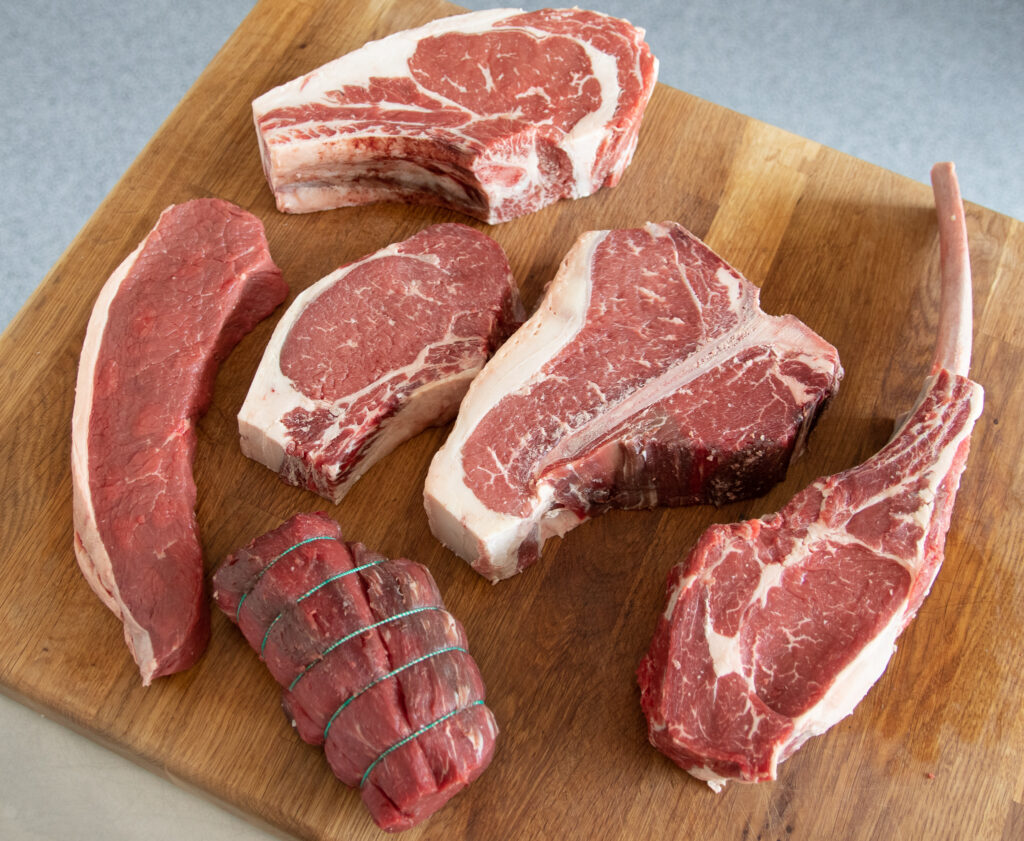
Non-Traditional Steak Cuts – Flat Iron, Bavette and Onglette
The front end of the animal, or forequarter, is doing more work and taking more of the animal’s weight, and therefore the meat tends to be sweeter and more rich in flavour. A great example of this is the Flat Iron steak, from the feather blade which is a muscle in the shoulder. There are only two feather blades on each animal which when carefully seamed open, a flat gristle removed, the beautiful flat iron steaks are created once portioned. This cut has outstanding flavour and is popular with chefs and is best cooked rare and thinly sliced.
Another cut that lends itself to flash cooking and cutting into thin strips is the Bavette. Taken from the thin skirt or goose skirt which is found in the belly or flank of the animal, this cut has an exceptional texture and deeply rich flavour.
Onglette, also known as Hanger Steak, is again famed for its big flavour and unique, open-textured appearance, best cooked rare. This cut comes from the beef skirt separating the stomach from the lung cavity.
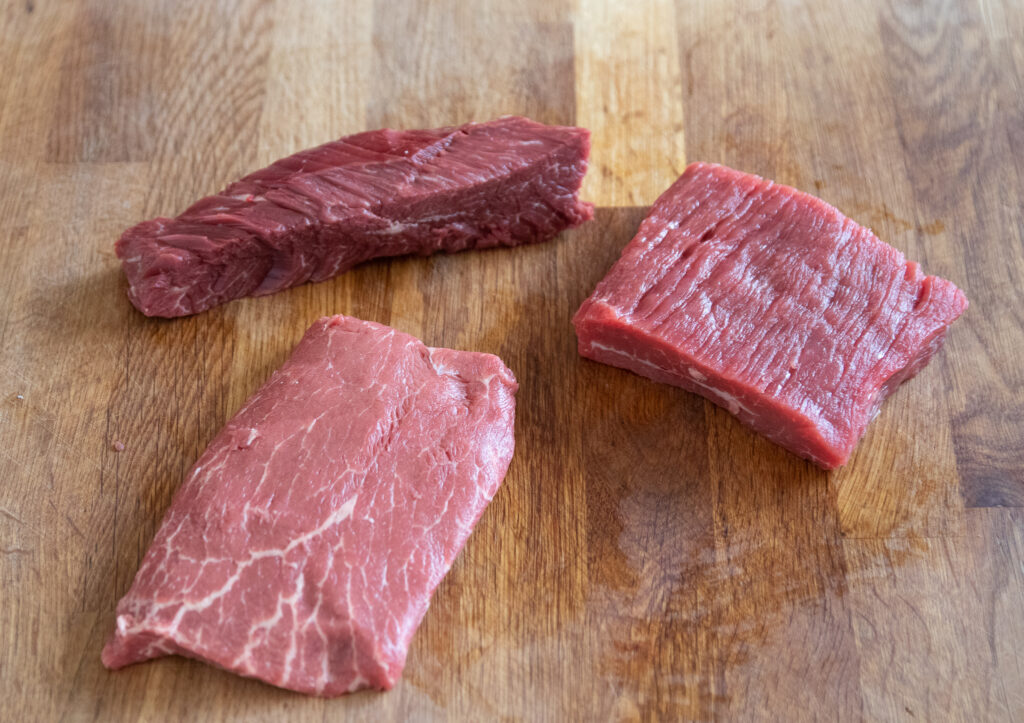
Whatever your personal taste preference, cookery skills or catering needs, there is a steak to suit everyone. We hope this guide helps to de-mystify what may seem like a daunting selection on offer, and help you make the right choice for your next culinary adventure whether it be on the grill, pan or BBQ!
All of R and J Yorkshire’s Finest beef is from grass-fed cattle, either home-grown or carefully selected from the best suppliers across the Yorkshire Dales, Vales and Moors. The meat is dry-aged on the bone in one of our Himalayan Salt Chambers, ensuring superior flavour and texture. Our recommended preparation and cooking times for all steaks can be found on the website.


